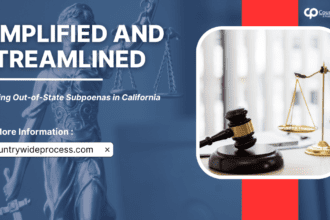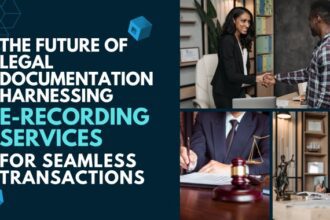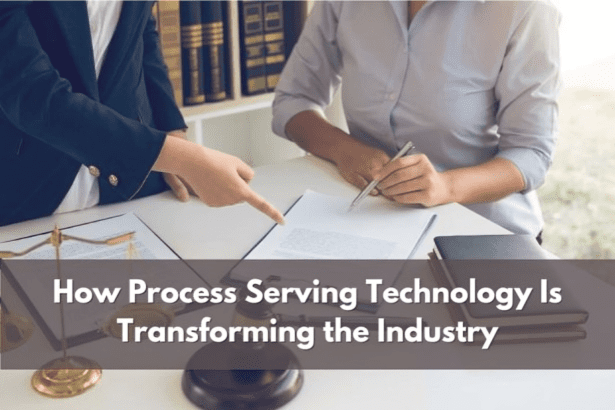Introduction
The office of a process server generally relied on paper trails, in-person visits, and manual record-keeping. However, in the past few decades, process-serving technology has changed. A process server too has become tech-savvy and has incorporated these tools and techniques in their daily work life practice. So for the following blog, we shall delve into the new technologies that are surfacing and how they are making the lives of the process servers easier.
What is process serving?
The career practice of a process server is an eminent legal profession and involves delivering legal documents to people involved in court cases and other legal actions. While legally serving a party involves
- Receiving party of impending court action, debt collection
- Filing for criminal charges.
- Their job further involves appearing as eyewitnesses for certain pending cases.
Now that is a lot of tasks and running errands involved herein. With that being said, process-serving technology can be considered a blessing in disguise, propelling the working procedure and streamlining their work process. At the “Country Wide Process,” all our officials are trained using the changing and ever-evolving technology.
How is process-serving technology changing?
This is the absolute holy grail of the article, as here we would discuss and identify in detail what precisely is the process serving technology.
- GPS tracking
This process-serving technology ensures accountability and accuracy; it is a revolutionized way that fans the legal procedure in the following ways:
- It helps process servers to keep references, helps in tracking the whereabouts, and ensures that they are right on track.
- This is adept for private investigators and helps process servers to get the job done efficiently.
- Providing verifiable evidence as and when needed.
- It helps in tabbing the person and indicates exactly when and where a person was served the legal documents.
- GPS tracking as trailblazing Process serving technology helps in keeping the clients posted about the recent updates on certain cases.
- Digital document management systems
Truth be told, the job of a process server revolves around documentation. Trying to keep documents organized is a process that is nothing less than a lot of elbow grease. However, with transitory changes in the process serving technology, the tenacity has reduced to a certain extent. This change has resulted in:
- Storing documents
- Managing documents
- Makes the process of documents easy to find
- Aids in tracking electronic documents when they are sent out to the clients.
- E-service
As the name suggests, e-service is closely related to the turning of services from a manual to a digitalized process. Be it digitally serving people with legal documents or serving them digitally, this process of serving technology in particular has made things much more efficient. As per the federal Rule 4(e)(1), all states falling under this mandate can send legal documentation through:
- Social media and
- Teleconferences
A groundbreaking attribute of process-serving technology is e-signatures. This is about the provision of the e-service, wherein the process server can take and sign “e-signatures. With these, the legal process:
- Can be sped up
- While reducing the time it takes to confirm service
- Move forward with the legal proceeding
- Beneficial in cases where the timing is critical (eviction orders or retraining services)
- With process serving technology, one can reduce unnecessary delays.
- Artificial intelligence
Artificial intelligence is already making a huge splash in most industries, and process serving is the exception. With that being said, with the use of AI (artificial intelligence) one can:
- Verify people’s personal information
- Analyze people data
- Cross-check data, including litigation-related information
- Identify any impediment that could impact their ability to find people.
- Automated databases
Now it can run down chills down any body’s spine if they had to look for the data and find it out manually. But all thanks to automated software like “skip tracking,” which allows you to skip the tedious process of sifting through the huge data set. With the help of this process-serving technology, servers can sort through various digital databases; it is like those search engine funnels that can help in optimization and also work on difficult cases faster.
- Mobile applications
Just the way there are different applications installed on your phone, don’t mind adding another, but this is specific for process servers. Yes, gone are those days when the process servers had to roam about with heavy sheaves of paper. Mobile-based applications are one of those revolutionary processes serving technology that helps in:
- Gaining access to legal documents
- Keep track of a person’s whereabouts while trying to seize them
- Receive updates on the cases the process servers are working on.
- The effective use of data-transferring tools
Since the discovery of the internet, it has been a blessing for mankind. With that being said, the field and profession of the process servers are no exception. Be it heavy-duty files or loading sheaves of paper, all the clients have to do is make use of data-transferring tools that can reduce the load and process of data transmitting.
Benefits of process serving technology—a sign of relief
Below are listed some advantages that process servers can reap from the “process serving technology.”
- Automation at core and peak saves time and is adept at streamlining operations.
- Compliance-process automation through the machine and the embedded experience can help companies avoid fines and penalties.
- Efficiency: with process serving technology, legal process servers can optimize processes and improve management.
- Accuracy: in a legal profession like that of the process server, being meticulous is an essential attribute. There cannot be anything as meticulous and prominent as technology in general.
- Quality: one can expect top-notch quality services when technology comes into play. As and when the processes become digitalized, the final results become first-rate. This further helps in attracting a positive client base and leads for any organization.
Conclusion
In sum, process-serving technology is Godsend’s hidden favor. Not only does it help the professional to come out of dreadful cases, but it also helps streamline the legal process. Whether you are a pro or just a newbie in the field, learning about these emerging technologies is a must and will help you to shine in your career.






